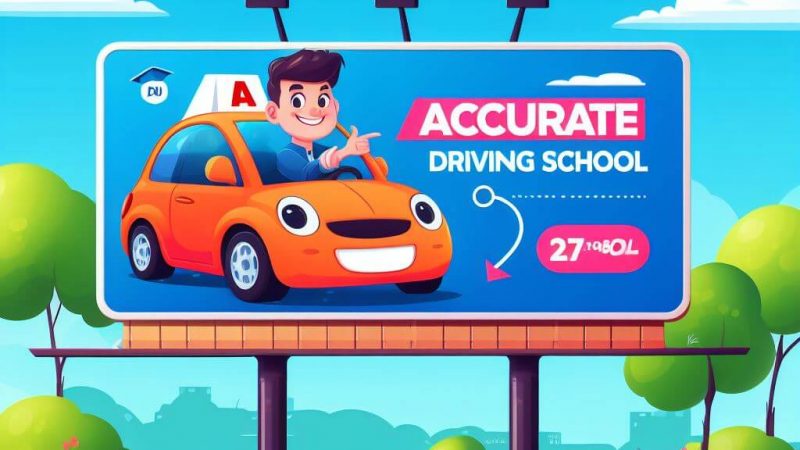The Meaning of Driving Lesson: A Comprehensive Guide to Learning and Mastering the Art of Driving

Driving is a skill that has become an essential part of our modern lives. Whether for commuting to work, running errands, or traveling on vacations, knowing how to drive is almost a necessity. However, driving requires practice, knowledge, and a deep understanding of the rules and regulations of the road. This is where driving lessons come into play. In this comprehensive guide, we will explore the meaning and importance of driving lessons, what they entail, and how they can benefit individuals who are learning to drive.
Contents
Understanding the Purpose of Driving Lessons
Driving lessons serve as a structured and systematic way for individuals to acquire the necessary skills and knowledge to become safe, responsible, and confident drivers. These lessons are designed to equip learners with a solid foundation in driving techniques, road safety principles, traffic rules, and etiquette. The ultimate goal is to prepare learners for passing their driving tests and laying the foundation for a lifetime of safe driving habits.
Components of a Driving Lesson
1. In-Classroom Instruction
Driving lessons often start with theoretical or in-classroom instruction. This component of the lesson aims to familiarize learners with the rules and regulations of the road, traffic signs and symbols, defensive driving techniques, and various driving scenarios. Instructors will use multimedia resources, presentations, and interactive discussions to impart this knowledge effectively.
2. Hands-on Practice
Hands-on practice is a crucial part of every driving lesson. Learners are provided with an opportunity to apply the theoretical knowledge they have gained in a practical setting. They will take the wheel of a vehicle under the guidance and supervision of a qualified driving instructor, who will teach them the necessary driving techniques, such as starting and stopping the vehicle, changing lanes, making turns, parallel parking, and defensive driving.
3. Traffic Laws and Regulations
Driving lessons also focus on teaching learners about the various traffic laws and regulations they need to know and adhere to. This includes understanding the meaning of different road signs and signals, speed limits, right of way, parking regulations, and other traffic-related rules specific to their country or region. The aim is to ensure that learners are aware of and follow these rules for their safety and the safety of others on the road.
4. Hazard Perception and Defensive Driving
Hazard perception and defensive driving form an integral part of driving lessons. It involves teaching learners how to anticipate and respond to potential hazards on the road, including pedestrian crossings, intersections, road conditions, and other unpredictable situations. By instilling these skills, learners are better equipped to make split-second decisions and react appropriately, reducing the risk of accidents.
5. Simulated Driving Scenarios
In some driving lessons, instructors may use simulated driving scenarios to expose learners to different driving situations without the risks associated with real-world driving. This can include driving through virtual environments, simulating adverse weather conditions, or practicing emergency maneuvers. These simulations provide learners with a safe space to develop their driving skills and decision-making abilities.
Benefits of Taking Driving Lessons
- Enhanced Safety: Driving lessons instill a strong emphasis on safety, teaching learners how to identify and respond to potential hazards, thereby reducing the risk of accidents and ensuring the safety of themselves and others on the road.
- Proper Driving Techniques: Driving lessons help learners develop the proper driving techniques and habits needed to become skilled and confident drivers. They learn how to control the vehicle, execute maneuvers, and navigate various driving situations effectively.
- Knowledge of Traffic Laws: Understanding and complying with traffic laws and regulations are essential for safe driving. Driving lessons ensure that learners have a comprehensive understanding of traffic laws, improving their ability to navigate the roads legally and responsibly.
- Preparation for Driving Tests: Driving lessons prepare learners for their driving tests by familiarizing them with the requirements, procedures, and criteria for passing. Instructors provide personalized feedback and guidance to address areas that need improvement.
- Insurance Benefits: Many insurance providers offer discounts to individuals who have completed formal driving lessons. By taking lessons, learners may be able to save money on their auto insurance premiums.
The meaning of driving lessons goes beyond a mere task of learning how to operate a vehicle. It encompasses acquiring the necessary knowledge, skills, and attitude to become a responsible driver. The benefits of driving lessons extend far beyond passing a licensing test. They equip learners with the ability to navigate the roads safely, responsibly, and confidently. By investing in driving lessons, individuals set themselves up for a lifetime of secure and enjoyable driving experiences.


